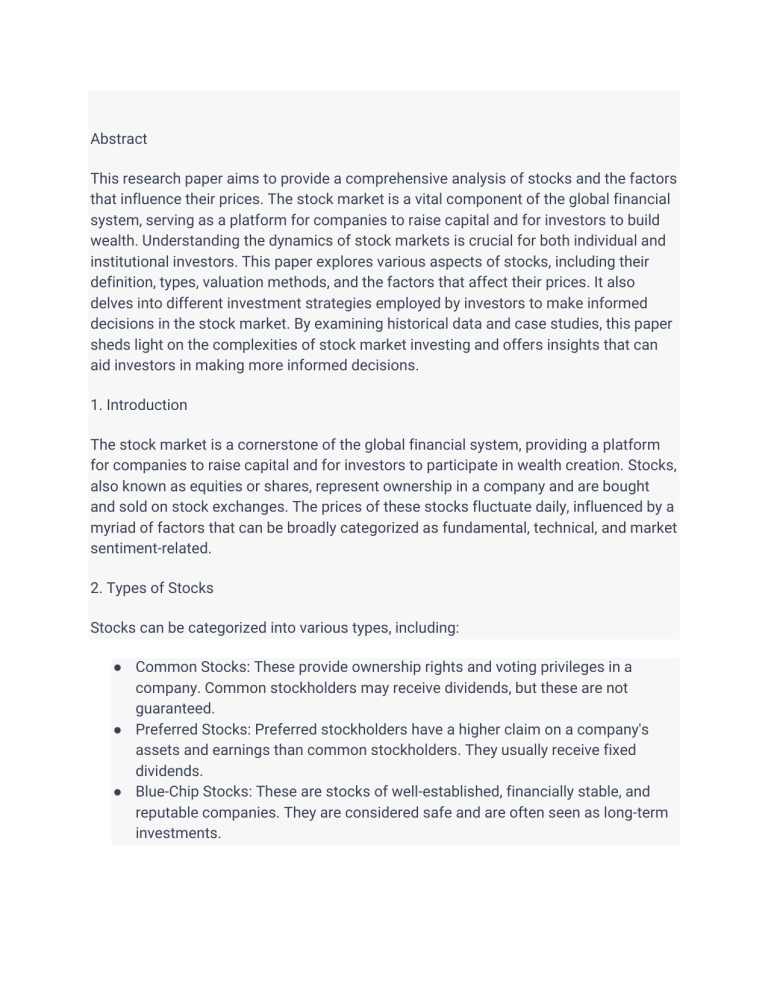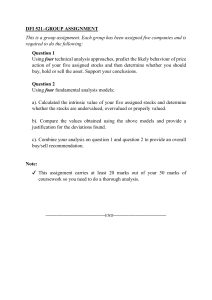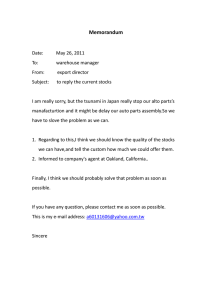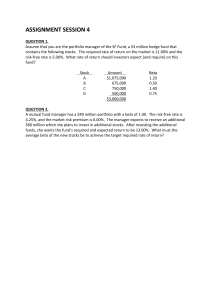
Abstract This research paper aims to provide a comprehensive analysis of stocks and the factors that influence their prices. The stock market is a vital component of the global financial system, serving as a platform for companies to raise capital and for investors to build wealth. Understanding the dynamics of stock markets is crucial for both individual and institutional investors. This paper explores various aspects of stocks, including their definition, types, valuation methods, and the factors that affect their prices. It also delves into different investment strategies employed by investors to make informed decisions in the stock market. By examining historical data and case studies, this paper sheds light on the complexities of stock market investing and offers insights that can aid investors in making more informed decisions. 1. Introduction The stock market is a cornerstone of the global financial system, providing a platform for companies to raise capital and for investors to participate in wealth creation. Stocks, also known as equities or shares, represent ownership in a company and are bought and sold on stock exchanges. The prices of these stocks fluctuate daily, influenced by a myriad of factors that can be broadly categorized as fundamental, technical, and market sentiment-related. 2. Types of Stocks Stocks can be categorized into various types, including: ● Common Stocks: These provide ownership rights and voting privileges in a company. Common stockholders may receive dividends, but these are not guaranteed. ● Preferred Stocks: Preferred stockholders have a higher claim on a company's assets and earnings than common stockholders. They usually receive fixed dividends. ● Blue-Chip Stocks: These are stocks of well-established, financially stable, and reputable companies. They are considered safe and are often seen as long-term investments. ● Growth Stocks: These belong to companies with high potential for growth, but they may not pay dividends. Investors often buy growth stocks with the expectation of capital appreciation. ● Value Stocks: These are stocks that are undervalued compared to their intrinsic value. Investors buy value stocks with the expectation that the market will recognize their true worth. 3. Factors Influencing Stock Prices Several factors influence stock prices, including: ● Economic Indicators: Economic data such as GDP growth, inflation rates, and employment figures can impact stock prices. ● Company Earnings and Financial Health: A company's profitability, debt levels, and financial performance play a significant role in determining its stock price. ● Market Sentiment: Investors' perceptions and emotions can drive stock prices. Positive sentiment can lead to bullish markets, while negative sentiment can result in bearish markets. ● News and Events: Events like product launches, mergers, acquisitions, and regulatory changes can affect stock prices. ● Interest Rates: Changes in interest rates can influence the attractiveness of stocks relative to other investments. 4. Valuation Methods Determining the fair value of a stock is essential for investors. Common valuation methods include: ● Price-to-Earnings (P/E) Ratio: It compares a stock's price to its earnings per share (EPS) and helps assess whether a stock is overvalued or undervalued. ● Dividend Discount Model (DDM): This method values stocks based on their expected future cash flows, especially dividends. ● Discounted Cash Flow (DCF) Analysis: DCF assesses a stock's intrinsic value by discounting its expected future cash flows to present value. 5. Investment Strategies Investors employ various strategies to make informed decisions in the stock market: ● Buy and Hold: Investors buy stocks with the intention of holding them for the long term, regardless of short-term fluctuations. ● Value Investing: Investors seek undervalued stocks and aim to profit as the market corrects its pricing. ● Growth Investing: Investors focus on stocks of companies with strong growth potential, even if they have high valuations. ● Technical Analysis: This involves analyzing historical price and volume data to make short-term trading decisions. ● Diversification: Spreading investments across various asset classes and industries reduces risk. 6. Conclusion The stock market is a complex and dynamic ecosystem influenced by a wide range of factors. Understanding these factors and employing appropriate investment strategies is essential for investors to navigate this market successfully. By conducting thorough research, staying informed, and maintaining a long-term perspective, investors can enhance their chances of achieving their financial goals in the stock market. References [Include a list of relevant books, academic papers, and reputable sources used in the research.]






